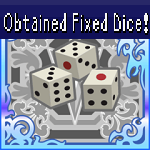|
OP is ... This poll is closed. |
|||
|---|---|---|---|
| an autist |
|
5 | 9.26% |
| a nerd |
|
12 | 22.22% |
| both |
|
37 | 68.52% |
| Total: | 54 votes | ||
|
Broke this discussion out of the Unicorns thread because I have opinions on *spits on ground* Japanese UX design, dammit. The topic started with a bunch of "The iPhone was a great product" vs "My Treo/Palmspring/coffee can did everything the iPhone did; the iPhone was just marketed better" vs "Yes but the iPhone made it all actually work and work well" slapfighting. Weatherman posted:One of Glorious "But enough about me, what do you think about me" Nippon's obsessions is its loving Galapagos phones and the how and why of them not taking off anywhere outside Japan. It's a continuing topic in the tech media even now. "They Baby Babbeh posted:What's I-mode? I'm not very familiar with Japanese phones of yore (although sadly very familiar with their... uh... idiosyncratic... approach to UX in other contexts) and it sounds interesting. Weatherman posted:Basically WAP-enhanced. It was good, for its time, but that time quickly passed while the telcos just kept snorting their i-mode koolaid. call to action posted:Maybe for certain elements of UI/UX, but the Japanese have built some ridiculously beautiful and functional products. My Honda motorcycles are amazing and ooze class, fit, and finish at a reasonable price. Early Sony TVs and Walkmans are similarly a work of art. nachos posted:Japanese UX in general is amazing. Their attention to detail far surpasses anything in America. I'm talking about non-tech stuff like subway stations having a name AND number, the way to-go food is packaged, the little square portion of a mirror that never fogs up in every hotel, etc Baby Babbeh posted:Don't get me wrong, the Japanese have always been good at hardware. There's a culture of craftsmanship and they sweat small details, which tends to lead to beautiful, well-built and functional objects so long as the interface is relatively simple. But they suck at software. There's just not enough empathy or effort to meet the user where they are, it becomes all about what the interface wants to say rather than what the user wants to do. Oddly the Germans are the same way -- some of the best industrial designers in the world, but you never want to use a program by a German company if you can help it. Cicero posted:Yes, this is absolutely true. The transit system here in Munich is incredibly good for a city of its size, but using the ticket machines made me want to jump in front of a train. Machines varying in type of payment accepted (credit cards yes/no, size of bills that are acceptable), if you hit 'back' it sometimes kicks you all the way back out to the start screen even if you're several screens deep, the search behavior to find a station is often incomprehensible. To specify you want a pass for a certain number of rings, you can't just directly say which rings you want, oh no, you have to specify your start destination and endpoint such that they cover those rings, and if the start destination you chose isn't the station you're actually at right at that moment BZZZT ERROR ERROR DOES NOT COMPUTE because apparently the idea that you might want to buy a pass for general use that wouldn't necessarily line up with your immediate trip didn't occur to the designers. I used to work at a subsidiary of a major industrial/electronics manufacturer that handled all their internationalisation for UX and product literature. Once I figured out that I wasn't going to be fired for sending submissions back with literally the entire original struck out and rewritten, I started to get complainier about the design decisions the engineers (yes, engineers making design decisions) were making and pushed them back with feedback like "start the input flow at the top and go down from there instead of putting the Submit button halfway through and on the left margin". I don't have any education or other experience in that industry, but I  have opinions have opinions  on Why Your Interface Sucks. on Why Your Interface Sucks.For example: the bolded parts in nachos's and Baby Babbeh's posts above. Station Numbering on Japanese Trains and Why It Sucks Tokyo Metro, the operator that ... operates the majority of the metro lines in the centre of Tokyo, started numbering their stations several years ago for easier navigation. Their 12-odd lines are actually quite simple: they start at one Tokyo Metro station and run through to another Tokyo Metro station. Two lines have small branches. Their numbering is simple A-nn, where A is the line letter (A for Asakusa, M for Marunouchi, etc.) and nn is the number from the starting point. Toei, who runs a handful of lines in the same area, did the same thing with the same A-nn format. So far, so good. Other operators decided they wanted to jump on the station numbering bandwagon too. If we make our railway easier for The rest, however, just started at 1 and kept going until all of their stations had a number, regardless of how that affected the sequence down a particular line. So now you can't just go "I'm at ZZ-10, I'm on a local train, and I want to get off at ZZ-20, so that's 10 stops", because the numbers might skip a whole lot where the line branches off. In other words, the numbering system is useless for its intended purpose. Finally, JR (who operate the Yamanote line that links all your favourite weeaboo hangouts like Shibuya, Harajuku, Akihabara, etc.) lumbered in on the act and went one further -- they numbered some lines and then decided to abbreviate some station names too. Seriously, look at those horrible signboards halfway down the first page. Instead of a board that cleanly says "Shinjuku", indicates the preceding and next stations, and shows the direction of travel, you have that plus a code phrase for the line PLUS a code number for the station PLUS another code phrase for the station! If you're a tourist, do you want to be able to quickly see where you are so you can check against your map, or do you want half a dozen code phrases to choose from and decipher? These examples simply illustrates my main point here: in software and soft-design (as opposed to things like the motorcycles and handcrafts, etc. that others mentioned), there is no thought about how the end user wants to accomplish a task using the product. The design is based on what the product is technically capable of doing. The preferred web page layout is still a dog-vomit list of links as far as the eye can see rather than hierarchical based on function, and God help you if you want to spend less than thirty hours trying to find one page of information on a government site. I'm going to bring this back to the Unicorn topic by saying that the Japanese UX industry is ripe for disruption by maybe hiring some people who are not the technical engineers to look at how the product is used from a user's point of view and creating an interface based on that. This thread isn't limited to Japan though. I'd like to hear about lovely and awesome UIs/UXes elsewhere and to find out what the great ones have in common. Weatherman fucked around with this message at 00:34 on Jan 12, 2017 |
|
|
|

|
| # ? Apr 26, 2024 08:25 |
|
Japanese UI design is definitely awful, ever play Gran Turismo 5/6? I think you could do a full essay on those. Especially GT5 has me swearing at the loving menus. edit: And gently caress trying to find anything on a Japanese website, it's like 90s GeoCities design all over again. Cached Money fucked around with this message at 13:21 on Jan 11, 2017 |
|
|
|
Cached Money posted:Japanese UI design is definitely awful, ever play Gran Turismo 5/6? I think you could do a full essay on those. Especially GT5 has me swearing at the loving menus. Cicero fucked around with this message at 13:33 on Jan 11, 2017 |
|
|
|
Weatherman posted:(2) The country in the aggregate is stuck in 1946 on the idea that The Americans Have Just Got Here and Know Nothing About Glorious Nippon, So We Must Teach Them. Station names, as an apparent example, are so fiendishly complicated that there's no way our tiny little pea-brains can comprehend such words as "Ueno" or "Shinagawa". Our hands must be held and several minutes explaining exactly how to pronounce it followed by reminding us that Japanese Is Difficult. This was definitely me. As a tourist I knew nothing about Japan and the numbering helped make the trains easy to navigate Tokyo. I can see how this spirals out of control with all of the different privately owned networks.
|
|
|
|
nachos posted:This was definitely me. As a tourist I knew nothing about Japan and the numbering helped make the trains easy to navigate Tokyo. I can see how this spirals out of control with all of the different privately owned networks. I don't disagree with you and I don't want to make it seem like I was jumping all over your post with my wall of text -- it just reminded me of a particular bugbear, that's all  Numbering works if it's clear and consistent and is developed with the use case always in mind. In almost all the examples I mentioned above, it was a case of "everyone else is doing it" plus "anything that we can describe as helping foreigners/getting ready for the Olympics is going to get us brownie points" rather than "how can we make navigating the train system easier for tourists?"
|
|
|
|
As someone who works in the mobile gaming industry directly with Japanese companies, let me 100% agree with that. It's one of the prime reasons the huge titles there have not managed to penetrate the western markets well. If you take a look at say the Final Fantasy franchises, they are capable of driving huge downloads in the west, because there is still a huge nostalgia market. However, all of the FF mobile games have made a fraction of what they make in Japan in large part because the UI/UX actively hates the user. Unresponsive, unintuitive and usually way too complex. Need more information displayed? Deeper menus! Menus on menus on menus! Look at all that nonsense going on. That's 17 things to click on just upfront, with one of those sections being able to be swipped. Click the unit button, and it takes you to this image:  All of the buttons are essentially the same, just a slightly different mode. They take you to a listing of units, and then depending on which one you clicked, a different action will be automatically selected. Said page will look something like this:  Why the gently caress are you using 4 buttons for that, and an entire page at that? That group of 5 in the first image is your active party, that group at the top in the second image is the same thing. How about when I click on unit, they sweep up into that position at the top, the mid section fades to the unit list, and a context menu pops up when I click on the units. A context menu doing EXACTLY that already exists on the second image when you click on a unit. They literally built the solution and then ignored it, it is so insane. Look at all that weird empty space on the second image! Also note that the first image is before they decided to patch in another little box of wasted info in that tiny bit of empty space between the party and the menu buttons on the top. I'm not even good at UX and it offends me.
|
|
|
|
Weatherman posted:no thought about how the end user wants to accomplish a task using the product.
|
|
|
|
Use case is the magic word. The use case should get almost as much design as the technology. It never does and things get left to trial and error and the use case for the last set of technologies.
|
|
|
|
i am glad you made this thread but i'm not sure what all i can contribute other than if you think public-facing UIs are bad i wish you could see some of this internal-facing stuff used in enterprise. horrifying is a huge understatement. why yes, there are still web applications out there using frames in 2017 that won't run in anything but IE from Windows XP.
|
|
|
|
persona 4 has good menus. i think the problem with those other japanese products is clear, not enough anime
|
|
|
|
Thank you so, so much for making this thread. I studied technical writing and psychology in college for this sort of thing, and god drat it now I see this sort of idiocy everywhere. An interface is a tool for letting users do things, not an art project for your portfolio.
|
|
|
|
wait isn't YOSPOS the designated forum for engineers writing frothing rants about the perfidious Orientals? (USER WAS PUT ON PROBATION FOR THIS POST)
|
|
|
|
I don't know if this is the sort of thread that needs a reading list, but I want to plug Design of Everyday Things as an awesome book on design. https://en.wikipedia.org/wiki/The_Design_of_Everyday_Things It does what the title says investigates how people interact with everyday things (like doors) and how and why those interactions succeed or fail. This may not sound directly relevant, but the concepts translate easily. Things have interfaces just as much as software and people build expectations around how things function based on how they are presented.
|
|
|
|
It's not the case for everything but some bad japanese UIs in english are just the result of Kanji having no equivalent in english. Lots of taking clearly labeled buttons or section having to either stretch them out to fit a full word or making up a totally nonsense icon that conveys nothing.
|
|
|
|
axeil posted:i am glad you made this thread but i'm not sure what all i can contribute other than if you think public-facing UIs are bad i wish you could see some of this internal-facing stuff used in enterprise. horrifying is a huge understatement. "So, what problem is somebody trying to solve with this feature?" "It frammels the gozzitz!" "When do you want to frammel a gozzits?" "Uh... this button right here. It says "frammel"." (me: murders engineer, steals his stock options, hides body in dechlorinator of lap pool) This is the UI equivalent of what I actually did, which was internal tools docs. The kind that migrate your [very large storage thing] from point A to point B.
|
|
|
|
We spent mid 6 figures to roll out an updated version of our ERP suite that has a UI that is basically babby's first VB5 program. There's no consideration for menu grouping, interface element tab order placement of entry fields is utterly haphazard, etc. The funny part is that they built a metro interface that's all touch enabled and has all these panels and stuff but as soon as you open a tracker or a dashboard boom you're back in 2001.
|
|
|
|
rscott posted:We spent mid 6 figures to roll out an updated version of our ERP suite that has a UI that is basically babby's first VB5 program. There's no consideration for menu grouping, interface element tab order placement of entry fields is utterly haphazard, etc. The funny part is that they built a metro interface that's all touch enabled and has all these panels and stuff but as soon as you open a tracker or a dashboard boom you're back in 2001. Well what are you waiting for? Open it and warn them about 9/11 and Trump!
|
|
|
|
What's weird about UI design is that it's a problem that was mostly solved at least by the sixties, probably in the late fifties. I have a systems design book from the early 60s and it devotes several chapters to what would now be called UI and even though the tech is different (starting with paper forms, ending with paper reports/invoices/etc.), about 90% of the stuff is directly applicable to any application that uses written input today. And it's based on actual studies and calculations, not ideology. The chapter on requirements-gathering should also be mandatory reading but that's another subject.
|
|
|
|
Jerry Cotton posted:What's weird about UI design is that it's a problem that was mostly solved at least by the sixties, probably in the late fifties. I have a systems design book from the early 60s and it devotes several chapters to what would now be called UI and even though the tech is different (starting with paper forms, ending with paper reports/invoices/etc.), about 90% of the stuff is directly applicable to any application that uses written input today. And it's based on actual studies and calculations, not ideology. What's the book?
|
|
|
|
Discendo Vox posted:What's the book? I'll have to find it when I'm at home.
|
|
|
|
Jerry Cotton posted:What's weird about UI design is that it's a problem that was mostly solved at least by the sixties, probably in the late fifties. I have a systems design book from the early 60s and it devotes several chapters to what would now be called UI and even though the tech is different (starting with paper forms, ending with paper reports/invoices/etc.), about 90% of the stuff is directly applicable to any application that uses written input today. And it's based on actual studies and calculations, not ideology. I sure can imagine a bunch of bad ui coming out of a guy working on one saying "the book about paper layout from the 60s solves all my questions about ui design"
|
|
|
|
As somebody who's looking to work at making input systems less incomprehensible, what's the best thing to study for this(netherlands)? I'm looking at Communication and Multimedia Design but I'm wondering if there's maybe a cryptically named option that is actually better somewhere.
|
|
|
|
Owlofcreamcheese posted:I sure can imagine a bunch of bad ui coming out of a guy working on one saying "the book about paper layout from the 60s solves all my questions about ui design" A layout is a layout. Flow is flow. There is no fundamental difference in how a human being looks at and operates a paper form and a screen form. Also since the data has to be entered into the computer system at some point, the paper was just an additional step; data entry by hand was the norm.
|
|
|
|
Jerry Cotton posted:A layout is a layout. Flow is flow. There is no fundamental difference in how a human being looks at and operates a paper form and a screen form. Also since the data has to be entered into the computer system at some point, the paper was just an additional step; data entry by hand was the norm. "we don't need to design for the actual device we have! Just replicate a paper form" is about the worst design advice I can imagine.
|
|
|
|
Owlofcreamcheese posted:"we don't need to design for the actual device we have! Just replicate a paper form" is about the worst design advice I can imagine. e: Nevermind, actually. If you're too stupid to understand that a paper form designed specifically for data to be entered into a computer, based on actual study on how human beings see and handle information is exactly what you do want to replicate, your answer is not going to matter. There's literally millions of people who have to suffer things like SAP because designers failed to do it. ee: SAP still wouldn't be good even if the UI was fixed but 
3D Megadoodoo fucked around with this message at 13:57 on Jan 13, 2017 |
|
|
|
Jerry Cotton posted:
From my experience, even moving from a mouse-based to a touch-based input has significant impact on how you think about designing your interface, and that's a smaller step than "typing stuff to put into a computer" to "using a keyboard and mouse", so I'm going to call bullshit on that one.
|
|
|
|
Jerry Cotton posted:
Yeah, this is nonsense, what are you even saying. A paper form is a paper form, designed to work with the specifications and limitations of paper. Designing things that aren't paper to act like paper is going to make a poo poo interface. Like even just not having an 8.5x11 inch screen is going to mean the layout of the page is going to have to be entirely different even if it turned out emulation of hand written text was the one true best way to enter information and things like dropdown boxes are mistakes.
|
|
|
|
If nothing else, the way people's eyes are trained to move around a screen form are different from the way their eyes move around a paper form. On a paper form, the most significant information is probably on the top left. On a computer form, people's eyes are going to look at whatever looks like a screen control and whatever has a color change. Look-and-feel are a vital part of computer interface design, because the designer controls what dominates the user's impression.
|
|
|
|
Arsenic Lupin posted:If nothing else, the way people's eyes are trained to move around a screen form are different from the way their eyes move around a paper form. On a paper form, the most significant information is probably on the top left. On a computer form, people's eyes are going to look at whatever looks like a screen control and whatever has a color change. Look-and-feel are a vital part of computer interface design, because the designer controls what dominates the user's impression. Also even if you make a paper emulator you can't just write on the screen with a pencil so the UI designer is still going to need to make a UI for your paper emulator. Can you write outside of the margins? do the fillable spaces need color coding or separation to distinguish from the text? Does the number entry let you write text characters? does it alert on errors? At enter time? As you enter when you are half way done entering? at the end? How does it indicate this. Do you fold up your computer and mail it to someone or does the paper interface somehow have a function to send or submit things? Etc etc etc. "Just make a paper form! it's a solved question!" just opens hundreds of questions about what interface you need to write to fake an interface with a sheet of paper and translate paper ideas to computer input ideas.
|
|
|
|
Owlofcreamcheese posted:Also even if you make a paper emulator you can't just write on the screen with a pencil so the UI designer is still going to need to make a UI for your paper emulator. Can you write outside of the margins? do the fillable spaces need color coding or separation to distinguish from the text? Does the number entry let you write text characters? does it alert on errors? At enter time? As you enter when you are half way done entering? at the end? How does it indicate this. Do you fold up your computer and mail it to someone or does the paper interface somehow have a function to send or submit things? People used to user-test UIs on paper, but nowadays it's cheap and easy to do a fake prototype and see what actually happens.
|
|
|
|
When I was a kid my parents had one of those VCRs you could program by scanning a series of barcodes, which was presumably an attempt to simplify the process. It wasn't great. https://www.flickr.com/photos/ralphstephenson/5960446662
|
|
|
|
I am reliving flashbacks of trying to install games on a small ps3 hard drive and holy poo poo is it not good
|
|
|
|
open24hours posted:When I was a kid my parents had one of those VCRs you could program by scanning a series of barcodes, which was presumably an attempt to simplify the process. It wasn't great. Considering which thread this is I find it slightly ironic that the Flickr page you link doesn't allow a user on an iPhone to zoom the photo....
|
|
|
|
Arsenic Lupin posted:This is a big, big issue in documentation. I spent nearly thirty years telling engineers, "Users don't want me to describe the user interface, they want to know how to do their jobs. So give me the use cases, and let me drive the documentation around those." Want to guess how often anybody had use cases? Note: I worked in OS/compiler/tools docs, so user interface was a laughable concept. But the same problem occurs in, say, Microsoft Word, which is full of features, many of which don't appear to solve any purpose other than to be features. The problem is that whoever is telling those engineers what to put in doesn't have use cases, or is extremely reluctant to share any - they just tell the engineer to do X, and the engineer muddles through as best as they can. This isn't just a management issue, either. Customers will often push hard for some specific feature they thought of, but getting specific use cases for that feature out of them is like pulling teeth...except that the engineer isnt usually the one who talks to the customer, so it's really more like trying to get somebody else to get someone else to pull teeth. Microsoft Word is a perfect example of customer-dictated design taken to extremes: nobody uses all or even most of Word's features, but every single feature (no matter how obscure or limited) has someone who not only uses it but insists it's absolutely essential to their workflow and can never be changed. Another problem is that UI design is often poorly integrated into the development process. Sometimes it's done too late and the designer ends up just slapping a new skin over the framework the engineer already built, sometimes it's done too early and there's already a full design done before an engineer even gets the chance to give their feedback or point out things that are impractical.
|
|
|
|
Main Paineframe posted:nobody uses all or even most of Word's features, but every single feature (no matter how obscure or limited) has someone who not only uses it but insists it's absolutely essential to their workflow and can never be changed. Word having a billion nonsense features seems like a late 90s thing. Does word even have any weird features anymore? It's all pretty straightforward at this point. Microsoft's UI designers DID seem to realize that having a billion similar obscure features hidden everywhere was bad design and moved everything into a pretty small number of buttons and menus.
|
|
|
|
I'm pretty sure it still has all those weird features, they just came up with a reasonable UI to organize them all. Of course that led to a lot of whining over but in retrospect I think it's proven to be the right decision.
|
|
|
|
Dr. Klas posted:Considering which thread this is I find it slightly ironic that the Flickr page you link doesn't allow a user on an iPhone to zoom the photo.... Flickr in general is loving awful but that's intentional to prevent people from 'stealing' your pictures.
|
|
|
|
Owlofcreamcheese posted:Word having a billion nonsense features seems like a late 90s thing. Does word even have any weird features anymore? It's all pretty straightforward at this point. Microsoft's UI designers DID seem to realize that having a billion similar obscure features hidden everywhere was bad design and moved everything into a pretty small number of buttons and menus. e: Main P, I agree with you that the engineers aren't the villains about "no use cases", but they're often victims just like everybody else. (Including the end user.)
|
|
|
|
mobby_6kl posted:I'm pretty sure it still has all those weird features, they just came up with a reasonable UI to organize them all. Of course that led to a lot of whining over but in retrospect I think it's proven to be the right decision. They absolutely also did that, but they really eventually start dropping the features word had that were getting too far outside word processing. All the web publishing stuff got simplified down and a lot of the "our programmers thought of a cool trick" stuff like autosummerize and highlighting important phrases got shrunk or removed and the art and clipart stuff changed around a lot to be more sensible.
|
|
|
|

|
| # ? Apr 26, 2024 08:25 |
|
Arsenic Lupin posted:(whine) Why the gently caress does Every. Single. Release. of Windows have to put the equivalent of the Start button in a different place?
|
|
|



 I-mode
I-mode 






















